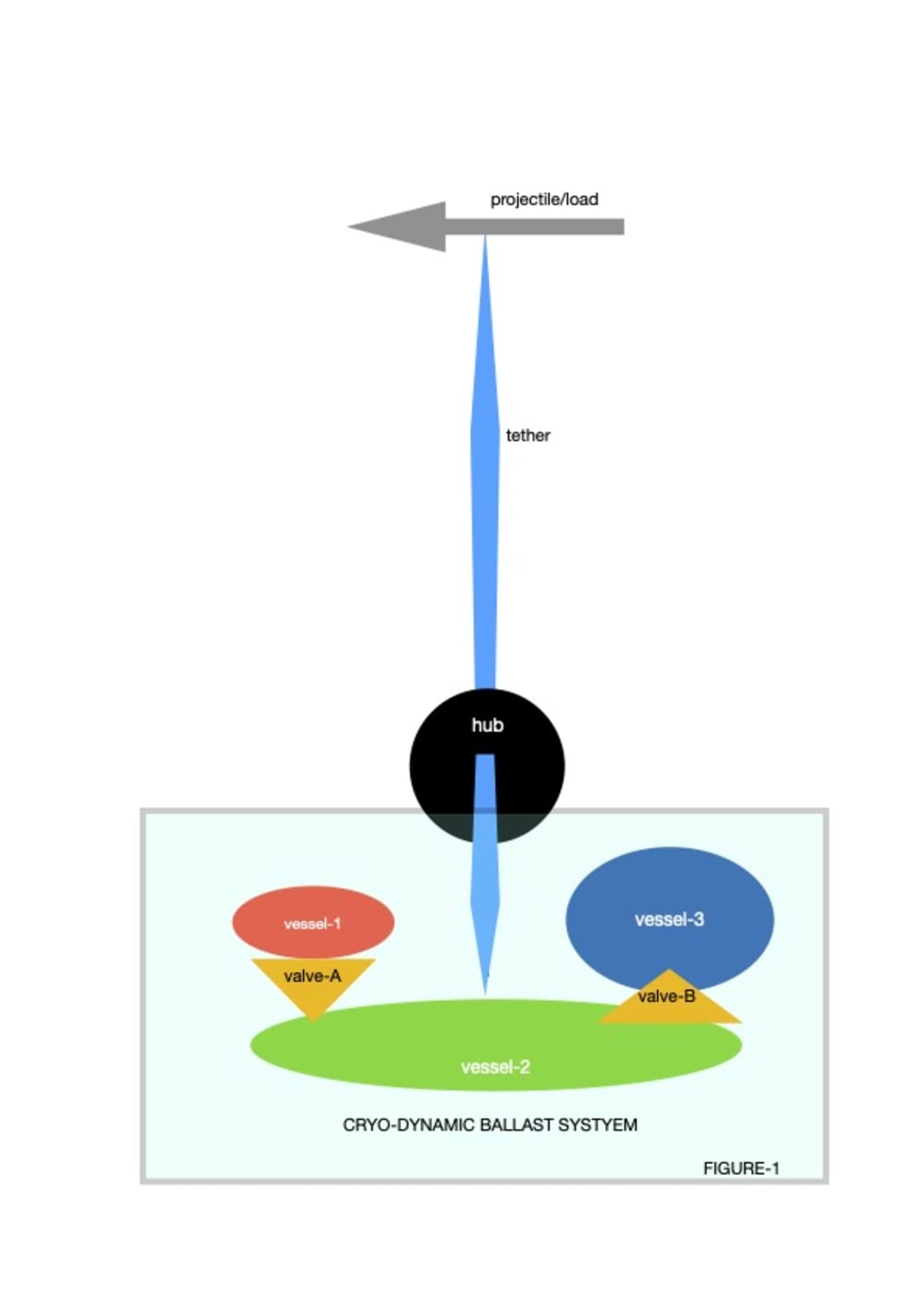The need to control the balance of a load that is spinning at a high rate of speed is essential to the preservation of the mechanisms of rotation in a dynamic launch system capable of accelerating a mass to an escape velocity. The customary solution of balancing a rotating assembly is to add counterweight. Counterweights maintain the balance of a rotating assembly by matching the weight equally between opposite ends of the rotating assembly. When the mass at one end of a rotating assembly changes, a corresponding change on the opposite side of the rotating assembly is needed in order to keep the rotating assembly from becoming unbalanced. An unbalanced condition may cause permanent damage to the rotating assembly, and to the housing that contains the rotating assembly. This poses a problem for a dynamic launch system. The mass of the projectile when launched continues in a straight line, and exits away from the rotating assembly. The counterbalance must also be jettisoned simultaneously, or the rotating assembly is put into a state of unbalance, and vibration may cause the destruction of the rotating assembly. The jettison of the counterbalance to maintain rotational integrity poses a significant challenge to a REUSABLE dynamic launch system. The need to maintain balance, and simultaneously manage the immediate effects of a change in mass on both sides of a balanced rotating assembly without the jettison of the counterbalance is a necessity for a repeatable launch platform.
It is ideal to offset the loss of mass without physically releasing/jettisoning the counterbalance in the opposite direction.
The Cryo-Dynamic Ballast uses the unique properties of CO2 at elevated temperature and pressure to apply a counterbalance that is manipulable throughout the complete flight-cycle of an orbital accelerator. When the pressure and temperature of CO2 gas contained in a sealed vessel is raised above the critical point of 73.9 Bar at 31.5 Centigrade it becomes supercritical. The supercritical phase of CO2 is both liquid and gaseous, however the mass of CO2 in this phase is 1072-1236Kg/M3. By changing the phase of CO2 from a supercritical phase state to a gaseous state quickly, at the same moment as the projectile is released, the rotating assembly maintains balance. There is a ~1000x reduction in the mass of the supercritical CO2 when it is exposed quickly to a low pressure vessel through a large valve. The unique properties of CO2, where it can exist as a cryogenic liquid in supercritical phase with a high density, and therefore mass, and then rapidly expand to fill an empty void, causing an immediate phase change to a gaseous state with a low density and low mass. it allows for maintaining the balance of a rotating assembly even in the event of a change in the mass at one end (tether-end) of the rotating assembly. The release of the load is a direct consequence of the opening and closing of the valves in the Cryo-Dynamic ballast system, which causes changes in the phase of the cryogenic liquid.
Like this entry?
-
About the Entrant
- Name:Gerald Barnett
- Type of entry:individual
- Patent status:pending

